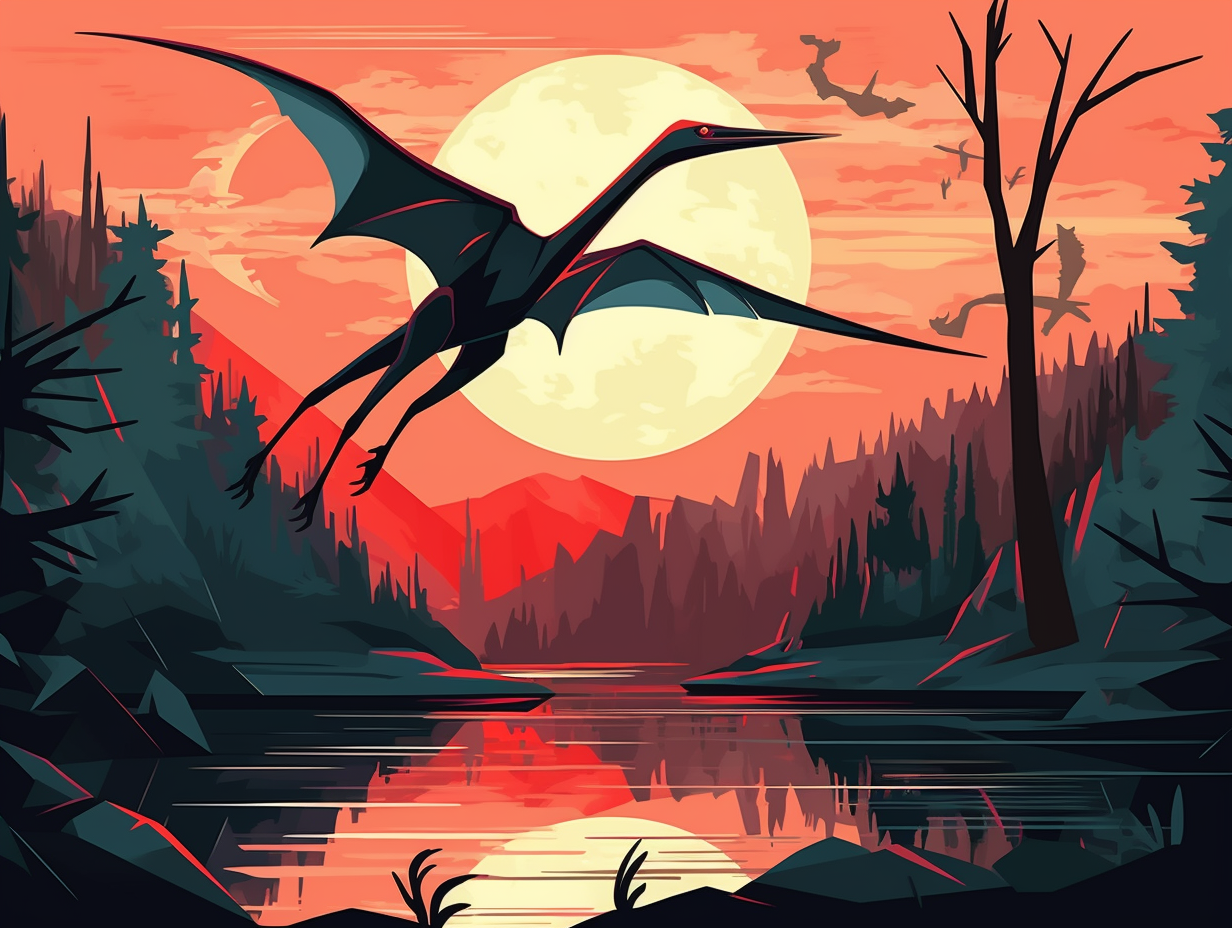Discover the Skies: Top 8 Pteranodon Fun Facts You Never Knew!

1. Superman Pteranodon Takeoff
Imagine if Superman needed all four limbs to take off: Pteranodons had a unique way of launching into the air using not just their wings, but also their Godzilla-like legs, making their takeoff strategy way more powerful than traditional birds.
Source => animals.howstuffworks.com
2. Mysterious Crest Purpose
Hair today, crest tomorrow: While you might think the Pteranodon's head crest was used by style-conscious dinos for an impressive comb-over or to score some hot dates, it actually remains a paleontological puzzler. Researchers now believe that the crest, which featured a unique bone structure supporting membranes, might have helped regulate body temperature or stabilized flight, but its true purpose continues to elude even the brainiest of fossil sleuths.
Source => amnh.org

Did you know the fearsome T-rex was actually more of a scavenger than a hunter? Explore how its incredible sense of smell and 12 ⅞-inch teeth reveal a surprising truth behind this iconic dinosaur.
=> Fun Facts about Dinosaurs
3. School Bus Wingspan
Before birds ruled the skies, Mother Nature had a different, ginormous prototype soaring on high: Enter the Pteranodon, a reptilian avian-missile boasting a wingspan longer than a school bus! Who needs the itty-bitty tweeting version when you've got an airborne-measurer-tape like this prehistoric party animal: Astonishingly, the Pteranodon had an impressive wingspan of 33-36 feet, making it one of the largest flying animals ever known. Powered flight came naturally to these giants, thanks to a flexible skin membrane stretching from their ankles to an elongated fourth finger, as well as their endothermic bodies, efficient respiratory system, and fiercely strong muscles.
Source => en.wikipedia.org
4. Pteranodon Speed Wizard
Move aside, Hogwarts Express: The Pteranodon was soaring through the skies long before J.K. Rowling penned her first spell! With a wingspan longer than a school bus, this prehistoric creature could glide up to 33 feet across with each flap, and it was fast enough to put even the Flash to shame. That's quidditch and crimson lighting all rolled into one magnificent, winged beast! So strap on your Nimbus 2000 and hold on tight; prehistoric skies were never quite so magical: In reality, Pteranodon had a wingspan of up to 33 feet, making it one of the largest flying animals in history, and its impressive speed allowed it to easily outpace other creatures during its time.
Source => ark.wiki.gg

5. Prehistoric Air Travel
Long before aviation took wing and aeronauts were still getting their bearings, one prehistoric pilot was already soaring through the skies, perfecting the art of air travel: Pteranodon boasted a wingspan of up to 7.5 meters, making it one of the largest flying animals to have ever graced our planet. Despite its impressive size, this scaled-up flapper primarily soared over oceans, using its toothless grin to gobble up fish and squid mid-flight, and keeping predator status strictly to the skies as it mostly scavenged for sustenance.
Source => oceansofkansas.com
6. Mansion-Winged Creatures
What do pteranodons and mansions have in common? They both have a staggering amount of "wing" space! : Sporting an impressive wingspan of up to 33 feet, pteranodons were among the largest flying creatures to ever grace our skies, equipped with hollow bones and a sizable keel on their breastbone to support their colossal wings – despite their itty-bitty brains.
Source => en.wikipedia.org
7. LinkedIn Pterosaur Star
If pterosaurs had LinkedIn, Pteranodon would be the most popular connection by a landslide: Boasting over 1,200 spectacularly preserved fossils, Pteranodon holds the esteemed title of most well-represented pterosaur in the fossil record, giving us the lowdown on the complex world of prehistoric gender differences, with smaller females sporting wider hips and modest crests, while the gents flaunted narrower hips and more extravagant crests for a dazzling display.
Source => en.wikipedia.org
8. Keeping Up with Pteranodons
Step aside, Kardashians, we've got a new family making headlines in the fossil record: Introducing the Pteranodon family, home to more than just a few quirky characters and plot twists! This gang of flying reptiles boasts four different species, and is packed with enough drama to keep paleontologists glued to their seats: With a cast of over 1,200 known specimens, these late Cretaceous creatures are not only the largest known flying animals but also hold the title for most well-represented pterosaur in the fossil record. Talk about keeping up with the Pteranodons!
Source => en.wikipedia.org
Related Fun Facts




















